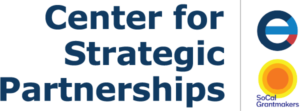The Center seeks to increase supports and connections to physical and mental health services for people living in historically under-resourced regions of the County.
The basic health care needs of Black and brown communities across Los Angeles County have been historically and systemically under served. Our health care system currently lacks the infrastructure to reach and care for those most disadvantaged by this systemic racism.
We seek to leverage the collective power of the private sector, the traditional health care system, and public health to increase reach into these communities, providing wellness and preventive care to keep our neighbors healthy and help our children and families thrive.
We learned a tremendous amount about the power of bringing health care into community during this recent pandemic. We will seek to build on and maintain the supports that we stood up during COVID, with community-based health workers in community and of community. We will not go back to a broken system; instead, we seek to build together a health care system that breaks down racist barriers and supports true wellness.
Impact Brief: Partnering with Community to Fight COVID Disparities
Center team lead: Olivia Celis
OUR INITIATIVES
ANTELOPE VALLEY RESOURCE INFUSION
The Antelope Valley Resource Infusion (AVRI) is a collaborative effort to improve the community safety net and maximize child and family well-being in the Antelope Valley (AV). AVRI is engaging the community in the creation of a shared agenda to develop system improvements and a robust network of supports that will ensure children and families in the AV are not only safe and healthy, but that they can thrive.
COVID VACCINE EQUITY
COVID-19 has had a vastly disproportionate impact on communities of color. Trusted messengers in impacted communities are essential to reducing the disparities in vaccine uptake. With the Center’s help, the County and philanthropy are working together to strengthen the capacity and infrastructure of more than 100 community-based organizations, resourcing them through grants large and small to provide vaccine outreach, engagement, and navigation support.
The Los Angeles County Department of Public Health (DPH), in collaboration with the Department of Health Services (DHS) and
First 5 LA, launched the AAIMM Initiative in 2018 to address persistent disparities in birth outcomes between Black and white babies. The AAIMM Initiative uses a racial justice framework to strengthen systems of support for Black moms and babies by embeddingcultural competency and cultural leadership into its processes and delivery systems to transform public health systems and build critical community infrastructure in places and spaces that Black families trust.
THE VILLAGE FUND
In the spirit of “it takes a village to raise a child,” the Village Fund partners with organizations, service providers, and networks that provide valuable support to Black birthing mothers and their families but are unlikely to receive County contracts directly. The LA Partnership for Early Childhood Investment, in its role as a Center strategic liaison, is educating the philanthropic community on the root causes of birth disparities, organizing philanthropic investment to advance community-driven change, and amplifying the role of philanthropy as a critical thought partner in knitting together effective public-private-community partnerships.
HOME VISITING
The Center plays a lead role in infusing philanthropic wisdom, investment, and leadership in the expansion and evolution of the County’s home visiting system. We arrange and oversee philanthropic sponsorship of consultants to support the County’s system planning and host semi-annual briefings for funders regarding opportunities to support technology needs, workforce development, COVID response, and more.
The County’s Alternatives to Incarceration (ATI) work group brought together service providers, community members, people directly impacted by the justice system, and representatives from multiple County departments and the Center to develop a roadmap that
diverts people away from the criminal justice system. An ATI Initiative has now been created within the County CEO’s office, charged with coordinating the continued reimagining of local justice and care systems so that care and services are provided first, and jail is a last resort.
The Los Angeles County Department of Mental Health and philanthropy embarked on a bold initiative together to address the mental health needs of the County’s most vulnerable residents by building the capacity of trusted grassroots community-based organizations to deliver prevention and mental health services in their communities. Transforming LA provides short-term, project-based grants as well as training, technical assistance and mentorship, with the goal of developing the infrastructure and workforce necessary for these organizations to access sustainable public funding.
OUR PARTNERS
The Center is a bridge builder, creating connections between the complex web of programs, staff, and departments that make up the County of Los Angeles and the world of private foundations. Too often, these two worlds move in separate spheres despite the overwhelming overlap between their mission and goals. In bringing the County and philanthropy together – and critically in helping us understand how each sees the world and our work – the Center helps create the space for innovation and partnership to everyone’s benefit. We can do so much more together.



